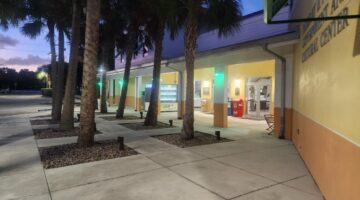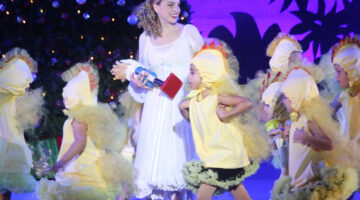HIGH NOTES
Bailey provides exciting opening for South Florida Symphony
KONK LIFE STAFF WRITER
The South Florida Symphony, formerly the Key West Symphony Orchestra, opened its season with a concert at the Tennessee Williams Theater, playing music by Verdi, Prokofiev, and Tchaikovsky. Sebrina Alfonso, the group’s founder and music director, has been temporarily sidelined by an injury; her place on the podium was taken by Piotr Gajewski, the conductor of the National Symphony in Washington. As substitutions go, it — and the concert itself — could hardly have been improved on.
The Verdi, his Nabucco Overture, opened with some full chords from the lower brass and then from the entire section, all beautifully played. Later on, in the Tchaikovsky, the brass section was exceptional, one of the best I’ve ever heard, here or elsewhere. Of particular merit throughout was the playing of the horns, especially that of its leader, Dan Wions, which expressed musically a wide range of emotions.
The Prokofiev piece, his Sinfonia Concertante in E minor, written for the great Russian cellist Mstislav Rostropovich, was played by Zuill Bailey. Mr. Bailey is a local favorite, whose association with the Symphony goes back to its beginning: He played at the fundraiser dinner at Casa Antigua which announced the founding of the Symphony, and since then he has appeared here several times as soloist in concerts, including an absolutely superb reading of a Haydn concerto three years ago.
Reports of his playing elsewhere have been highly enthusiastic, both for his live performances and his many recordings: Over the years he has gained a reputation as one of the outstanding cellists now on the scene. He certainly proved that in the Prokofiev. His playing of the many fast passages was exciting — the man has technique to burn. But the best parts of the piece, for me, were the slow passages, simple, lovely melodies, where he achieved a real sweetness.
The Prokofiev is an extremely long piece of music, at least 40 minutes, but Mr. Bailey’s endurance was equal to the task—the energy and control didn’t flag at all toward the end.
In the Tchaikovsky, the Fourth Symphony, the entire orchestra played with an extra degree of precision, in part due to Mr. Gajewski’s crisp conducting; this was a considerable accomplishment, since nearly all the players were first-timers with the Symphony. The big brass fanfares were of great strength without ever being blown into distortion. The famous melody in the second movement can easily be sentimentalized, and often is. Not here: The emotional import was kept within the bounds of an honest intensity. The same could be said of the entire concert.
Most of the principals, who played the exposed passages, were new, but there was no falloff in the quality of the playing. In the Tchaikovsky’s first movement there was an elegant flute solo by Mary Kerr; in the second, a bright sprightly passage by Vince Pena on piccolo. In the Verdi, a short solo by the principal trumpet, Jarrett Kocan, sounded in style to be idiomatic to Italian opera. It is always pleasant when a soloist adds something beyond simply playing the notes correctly.
The substitution of Mr. Gajewski worked out extremely well. He got from his players just about all the emotional power that 65 musicians can produce, which was appropriate since that is Sebrina’s own forte, or one of them. In the Prokofiev, his conducting was consistently sensitive to Mr. Bailey’s playing. Throughout the concert, it was full of nice touches, the last of which was that at the end of the Tchaikovsky, powerful as the earlier tuttis had been, he had kept a little extra back for the finale. At the end of the concert, the audience gave him and his players a standing ovation, calling him back three times and would have done it again if he’d let them. All of this was a quite wonderful way to begin a season.
[livemarket market_name="KONK Life LiveMarket" limit=3 category=“” show_signup=0 show_more=0]







fcs, where is the freaking story about the elephants?